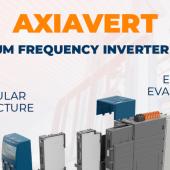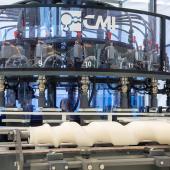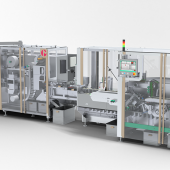FlexAbility: a day of “shared” innovation
With the onus on knowledge sharing, an encounter organized by BASF gathered together the stakeholders of an Italian segment of excellence (that of flexible packaging): successful experiences, technological development, new products and future scenarios.
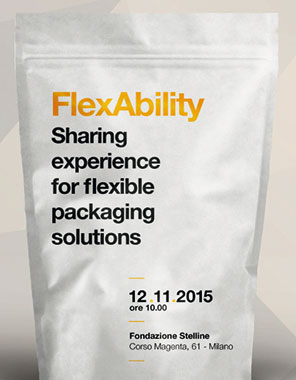 With the event “FlexAbility - Sharing experience for flexible packaging solutions” (12 November 2015, Milan - Palazzo delle Stelline), BASF wished to reconfirm its commitment to exchanging skills and knowhow with other subjects in the industrial sector.
With the event “FlexAbility - Sharing experience for flexible packaging solutions” (12 November 2015, Milan - Palazzo delle Stelline), BASF wished to reconfirm its commitment to exchanging skills and knowhow with other subjects in the industrial sector.
A broadly extending concept that inspires the policies of the German multinational with a consolidated presence in Italy, that of “Open Innovation”, which in itself implies opening up to cooperation, making one’s own research and external skills and knowhow permeable.
Hence the times of the dogged defence of one’s competitive advantage are over, because only by sharing can the level of objectives be raised, making challenges a common cause and improving the success margins of all the subjects involved. Committed to developing solutions aligned with global market trends, developments in standards and the need for greater consumer awareness, BASF thus wished to dedicate a moment of insight to all the stakeholders, with which it shares the spirit of innovation and the search for sustainability.
Presences
Professor Luciano Piergiovanni, Professor of Food Science and Technology at the University of Milan, moderated the interventions of the plenary session, where several players gave an account of their experience of working with BASF in film production, printing and laminating, areas where the multinational company has developed a whole series of products: from biodegradable polymers to special effects pigments and ink photoinitiators, additives for protection from UV rays, to antioxidants and process stabilizers, up to waterbased adhesives.
The latter in particular were highlighted by two machine builders, each underlining their respective characteristics and properties.
Gian Vito Schiavi of Comexi described the potential of two of the Iberian group’s leading machines - the Flexo F2 WB flexographic printing machine and and Nexus ML1 WB rolling rolling machine - recalling that AMB of San Daniele del Friuli (UD) has been successfully using them for some time now to produce completely waterbased, high barrier film for the food sector. In this case Comexi’s engineering skills were complemented by the excellence of BASF’s solutions: if for the Flexo F2 WB the German company in fact supplies the Joncryl® FLX, special resins able to equal the performance of waterbased inks and solvent-based products, the Nexus laminating ML1 WB uses the Epotal® Range waterbased adhesive.
The solvent-free solutions - remarked Schiavi - offer many advantages in terms of competitiveness and process optimization, while a production technique is being perfected capable of achieving zero atmospheric solvent emissions, while maintaining the excellence of the final result, in particular as far as colors and finishes are concerned.
Obvious the benefits, first and foremost for consumers, with the reduction of the risk of migration of undesired substances from the food pack.

Enrico Monteverdi and Marco Murelli of Hewlett & Packard cited their work with BASF, the latter again in the role as adhesives supplier, in a joint Hp-Comexi project. This synergy led to the creation of an integrated solution for the production of flexible packaging, able to combine the advantages (ecological, ethical, but also technical and economic) of the BASF waterbased adhesives, with those of digital printing, for which versatility, reduction of time to market and brand customization are keywords. In particular the two companies have been working to integrate the digital printing process realized with HP Indigo 20000 with the post-press lamination process entrusted to the Comexi Nexus L20000, this both in-line and off-line.
During the talk, the choice of waterbased solutions, recognized as the most suitable, was further gone into: joint studies made by the respective R&D Laboratories have in fact shown how the adhesive patina, distributed in the lamination process between the printed substrate and the subsequent coating substrate, needs to be as soft and elastic as possible, in order to minimize the mechanical stress on the underlying print interface which could otherwise suffer excessive strain and damage. Since the waterbased adhesives are unquestionably softer and more flexible, the choice was hence dictated for purely technical reasons. Equally important, the film obtained by this process conform to food industry standards.
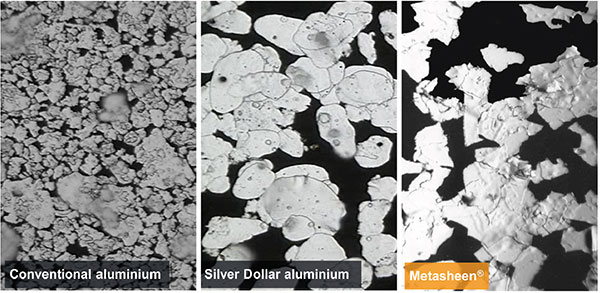
Giampiero Ripamonti of Novachem and Ruth Bauer of BASF closed the plenary session by presenting a joint project aimed at the development of Metal Mirroring Effect, a solvent-based ink with excellent metallised properties, compatible with all traditional printing techniques. Here BASF provided Novachem with a patented pigment, the VPMS Metasheen (Vacuum Metallized Pigment), thanks to the particular “flake” used, that has a smooth, flat and regular surface, offering great reflection, offering an effect much brighter than the traditional aluminum pigment. Thanks to this solution the metallic mirror effects (for details and finishes, for up to 25% of the total area) can be achieved in a normal in-line process, without resorting to off-line metallization procedures, thus saving on processing and raw material costs.

The ethical challenges of the future
If the plenary session talks brought good examples as to how, starting from the real needs of the industry and thanks to the partnership and the sharing of expertise leading to successful product solutions, optimization of raw materials and processes as well as environmental protection can be achieved, the parallel talks held in the afternoon focused on technological innovations aimed at sustainability and food safety. The afternoon talks held by BASF experts offered new insight into the features of paper packaging (Walter Savoia, Jan Van Delft), waterbased adhesive systems (Christoph Kiener, Peter Preishuber-Pfluegl), solutions and pigments for compostable packaging (Martin Bussman, Ruth Bauer), risk assessment of NIAS for the compliance of food packaging (Alfred Dratva).
The day ended with a moment of reflection on future trends and scenarios: Paolo Ferrarini (Future Concept Lab), journalist and designer, expert on emerging aesthetic trends and digital behaviour, provided insight to offer a key to understanding the evolution of consumer behaviour and the role of sharing as a key ingredient in contemporary marketing strategy.











